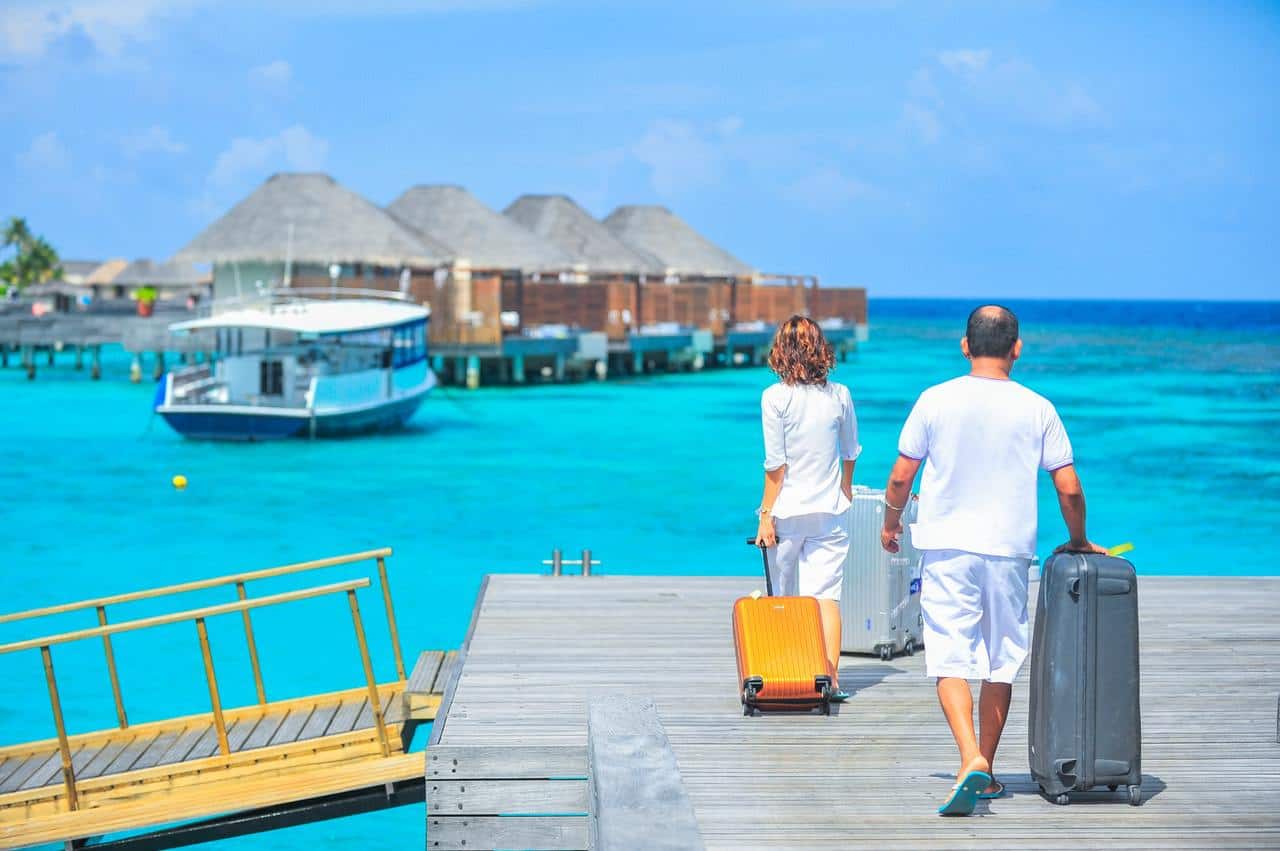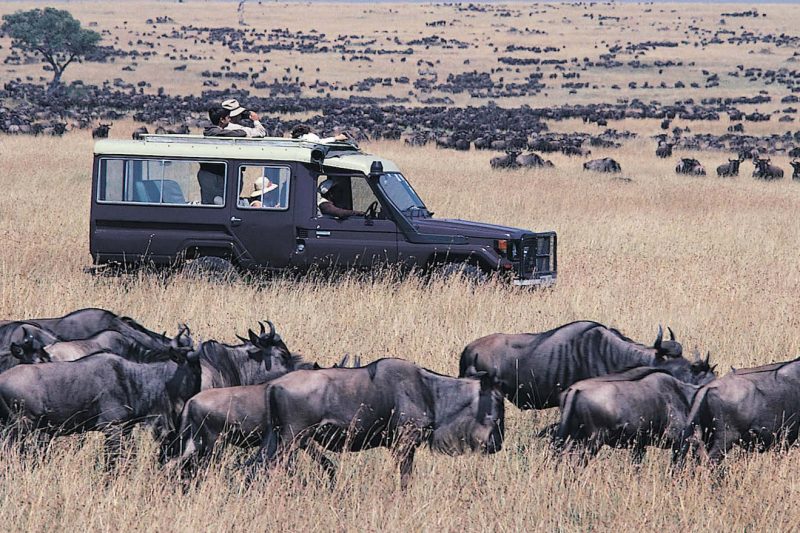Mombasa Beach Tour Holidays Kenya
Immerse your toes in the supple white sand while relaxing waves lap the shoreline of Mombasa. The Indian Ocean’s aquamarine water meets the baby blue sky on the horizon as far as the eye can see. Your spirit is refreshed like the breeze in the swaying palm trees by sipping a lovely cocktail. Mombasa’s beaches will melt away all of your worries and rejuvenate your body, soul, and mind.
Acacia Safaris offers beach and island excursions on Mombasa’s North and South Coasts. We help you find the ideal getaway, whether you want to be close to famous landmarks, do water sports, or be completely isolated. For our guests who want to be closer to the central district island of Mombasa and prefer popular seashore settings with large resorts and hotels, we suggest the North Coast beaches.
Activities Done At the North Coast of Mombasa
Golf, tennis, snorkeling, squash, diving, and other sports are just some of the water- and land-based activities available at the four north beaches—Nyali, Bamburi, Shanzu, and Kikambala. The North Coast’s affordable accommodations are well-liked by families. The South Coast of Mombasa perfectly embodies quiet isolation and immersion in a paradise on the beach. While the Nyali bridge on the North Coast attracts thousands of visitors, air and ferry travel are the only means of getting to the South Coast.
You may practically have the long stretches of sandy seafronts to yourself and a few guests who share your interests in some specific regions. Alfajiri Villas, where Brad Pitt and Angelina Jolie have stayed, is one of the best hotels in the picturesque setting that will make you feel like royalty. Even though Diani Beach is well-known, it still provides a sense of peace in comparison to the crowds at Bamburi Beach on the North Coast.
The Indian Ocean is right at your feet, waiting for you to skim along its surface. In the deep, you can do waterskiing, windsurfing, and sailing. Just below the surface are aquatic experiences that are more peaceful. The numerous vibrant and energetic marine species that dart in and out of bizarre coral formations constantly captivate, enchant and captivate you. Acacia can arrange deep-sea fishing around Mombasa if you want a vacation in Kenya filled with the most thrilling ocean adventures.
Fishing Activities at Mombasa Coast
Anglers of all skill levels can enjoy world-class fishing on the North and South Coasts, where they can take on the challenge of catching some of the ocean’s largest fish. Marlin, yellowfin tuna, kingfish, sailfish, swordfish, wahoo, and a slew of other feisty species are waiting for your skill and willingness to fight them in a frantic battle of endurance. Other lesser-known beaches on the South Coast include Msambweni, Galu, Tiwi, Shimoni, and Shelly.
Mombasa is the ideal location if your ideal East African beach vacation includes aspirations of a remote island! Chale and Funzi, two islands in Kenya’s wilderness, are ideal havens for fast-paced action and adventure. Chale Island is a favorite, quiet spot away from Diani Beach’s crowds and is used as a great base for diving and snorkeling. There are shallow and deep experiences on the reef, and you might even spot a whale shark.
Additionally, the island has locations that are ideal for inland excursions. Funzi Island has even more stunning secluded beaches and a soft blue ocean waiting for you. Sailing, fishing, ocean kayaking, canoeing, and other activities are all available on the island, which is known for its turtle species, as well as access to diving and snorkeling excursions to Kisite Marine Park. Undiscovered paradise is the tidal sandbank in front of Funzi Keys. The beaches of Mombasa surpass all of your expectations, regardless of how you envision spending your time on Kenya’s coast.
Mombasa Beach Holiday Tours Guide
Acacia guide takes you on a foot tour of the city’s winding inner streets, you will be captivated by the mixture of cultures, history, and coastal metropolitan flair that is reflected in the people and architecture. The Swahili women’s traditional black Bui Bui, which they adorn, and others’ brightly colored khanga and Kikoy may be the first thing you notice about its inhabitants.
The city’s architecture includes churches, temples, mosques, and a mix of colonial, contemporary, and Omani-style buildings that are as diverse as the people who live there. One of the many places to learn a lot about Mombasa’s turbulent past and how it has shaped the city into its current status is the Fort Jesus Museum, which is located at the entrance of the old town harbor.
The Portuguese built the fort in the 16th century, and its strategic location sparked numerous battles for control of the Kenyan coast. The Shirazi Arabs were the first challengers, and they fought multiple battles with the Portuguese over many years.
Brief History of Mombasa Coast
Mombasa has a history that has been recorded since the first century, but after that, the city has not been mentioned much in history until 1498, when conquerors, traders, and adventurers began to arrive. Although Portuguese colonization was largely unsuccessful, battles continued until 1822, when the Sultan of Oman was able to reestablish the commercial activity that was essential for the future of the city.
Until 1885, when the Treaty of Berlin placed Mombasa under British control, the city was governed by an Arab government. The introduction of the railway made it easier to get to the island, which helped commercial activity grow even more. As a result, the island is now Kenya’s second-largest city, after Nairobi.
Adventure Activities in the Old Town
Your Acacia tour guide will take you through the charming old town of Mombasa. The streets are lined with charming shops, open-air markets in Mkokoteni carts, and charismatic houses. The air is filled with the scent of exotic spices. You simply cannot resist the urge to investigate every vendor’s merchandise as your anticipation grows as the winding road gradually reveals yet another delightful surprise just around the corner.
Some of the treasures you’ll find are hand-woven textiles, intricate carvings, and art. Mombasa’s beautiful white beaches border the turquoise and azure waters of the Indian Ocean, and the city is close to Kenyan safari destinations, both of which contribute to the city’s tourism industry.
The island is connected to the mainland by a bridge on the north coast and a ferry on the south. These two access points make the experiences at the respective seashores better, with the north coast having a more bustling seaside and the south coast offering beachfront that are more exclusive and secluded.
Mombasa Marine National Park
The tranquility of Mombasa Marine National Park and Kisite Mpunguti Marine National Park, as well as the terrestrial wildlife of Shimba Hills National Reserve and Tsavo East National Park, as well as numerous other protected areas, are also appealing. You can also follow in the footsteps of historians, environmentalists, and archaeologists at Nature Trail At Haller Park, Jumba la Mtwana, Gede Ruins, and numerous other culturally and historically significant sites.
What is the Best Time for Mombasa Beach Holiday Tours?
The weather in Mombasa typically resembles that of Kenya and, more specifically, the East African coast, but it is typically more humid. Mombasa, like other places in Eastern Africa, has two rainy seasons: the longest in April and May, when it rains most heavily in the afternoon, but it doesn’t rain every day or every week, and the shortest in June. Because Kenya is right on the equator, you can expect hours of sunshine, overcast skies, and a few days of “rain-break.”
The Long Dry Season
The long dry season, which lasts from July to October, is the best time to visit Mombasa and go on a safari because there aren’t many clouds and there is a lot of sunshine. In Mombasa, the brief rains begin in November and continue until the end of December, when the brief hot-dry season begins.
The warmest months are January, February, and parts of March, when daytime temperatures average 90 degrees Fahrenheit (32 degrees Celsius), while the coolest months are June, July, and August, when daytime temperatures average 80 degrees Fahrenheit (27 degrees Celsius). Depending on the time of year you travel, nighttime temperatures range from 70 to 77 degrees Fahrenheit (22 to 25 degrees Celsius).
Many of Mombasa’s tour activities involve the water, and even in the cooler months, the water temperature is quite comfortable. The humidity can be quite high, and only a small number of Acacia visitors may not be able to stand it. The humidity ranges from 80 to 85 percent all year, making it a popular destination for those escaping the harsh winters of Europe and North America.
You will be pleased to learn that the hours of sunshine, which range from seven to nine hours and include twelve hours of daylight, do not change significantly throughout the year. Sunshine plays an important role in your holiday enjoyment of the sand and sea lifestyle in Mombasa. Some marine life only exists at specific times of the year.
Best Time to Catch Fish at Coast
Depending on your personal preference for aquatic species and behaviors, your Acacia tour planner can further advise you on the best times to visit. Between the end of June and the beginning of December, humpback whales make their way through the region. Anglers who plan a trip between August and October have a chance to catch enormous yellowfin tuna. The best time to fish for all three types of marlins is from December to March.
Depending on your personal preference for aquatic species and behaviors, your Acacia tour planner can further advise you on the best times to visit. Between the end of June and the beginning of December, humpback whales make their way through the region. Anglers who plan a trip between August and October have a chance to catch enormous yellowfin tuna. The best time to fish for all three types of marlins is from December to March.












